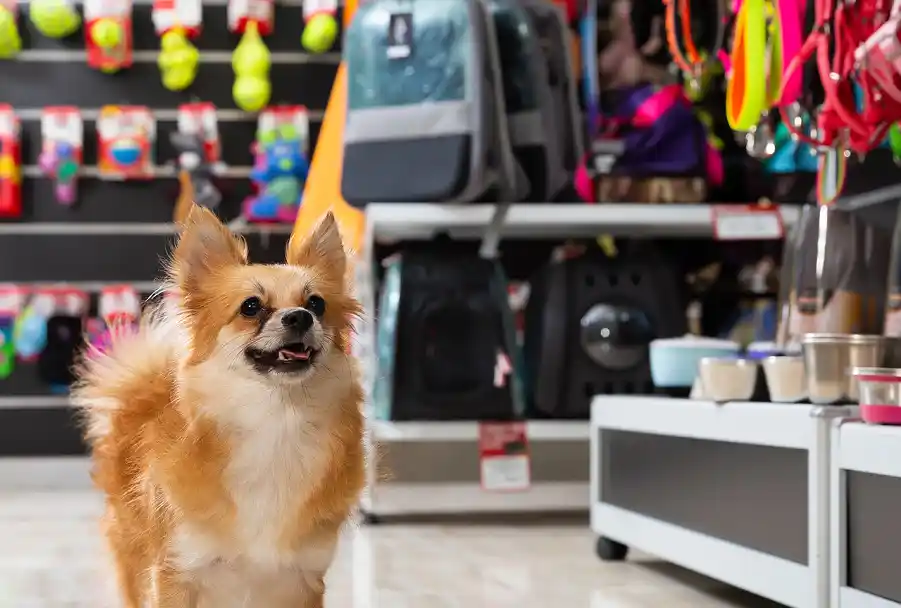The pet industry has witnessed remarkable growth over the years, driven by the deepening bond between humans and their furry, feathered, or scaly companions. However, this thriving market isn’t immune to threats and challenges. In this article, we’ll explore the various threats looming over the pet industry, from economic factors to shifting consumer preferences, and consider how businesses and pet owners can navigate these challenges.
1. Economic Uncertainty
a. Economic Downturns
The pet industry is closely tied to the overall economic health of a nation. During periods of economic recession or uncertainty, consumers may cut back on discretionary spending, including pet-related expenses. This can impact sales of pet products and services.
b. Rising Pet Ownership Costs
The cost of pet ownership is on the rise, driven by factors such as veterinary care, pet insurance, and premium pet foods. Economic pressures on consumers may lead to reduced spending on high-end pet products and services.
2. Regulatory Changes
a. Stricter Regulations on Pet Products
Governments are increasingly implementing regulations and quality standards for pet products, including food and medications. Compliance with these regulations can be expensive and time-consuming for pet industry businesses.
b. Animal Welfare Laws
Stricter animal welfare laws can impact the pet industry, particularly in cases involving pet breeding, pet stores, and the treatment of animals in various pet-related businesses.
3. Changing Consumer Preferences
a. Shifting Pet Food Trends
Consumer preferences for pet food are evolving, with a growing demand for natural, organic, and sustainable pet food products. This shift can challenge traditional pet food manufacturers.
b. Focus on Pet Health and Wellness
Pet owners are increasingly focused on the health and well-being of their pets, leading to higher demand for pet healthcare products and services. However, this shift can also create competitive pressures within the industry.
4. E-commerce and Online Retail
a. Competition from Online Retailers
The rise of e-commerce has transformed the retail landscape, including the pet industry. Online retailers often offer a wide range of pet products at competitive prices, posing a challenge to brick-and-mortar pet stores.
b. Convenience and Home Delivery
Consumers increasingly value the convenience of online shopping and home delivery for pet products. Traditional pet stores must adapt to this trend to remain competitive.
5. Pet Overpopulation and Animal Welfare Concerns
a. Stray and Abandoned Pets
The issue of pet overpopulation and the number of stray and abandoned pets remains a concern. Animal shelters and rescue organisations struggle to cope with the influx of animals in need of care.
b. Ethical Pet Sourcing
Consumers are becoming more conscious of the ethical considerations surrounding pet sourcing. They may prefer adopting pets from shelters or ethical breeders over supporting puppy mills or unscrupulous pet suppliers.
6. Health and Safety Concerns
a. Pet Food Recalls and Product Safety
Instances of pet food recalls and safety concerns can erode consumer trust in pet product brands. Maintaining rigorous quality control and safety standards is crucial for businesses in the pet industry.
b. Zoonotic Diseases
The emergence of zoonotic diseases, such as the COVID-19 pandemic, can impact pet ownership trends. Concerns about disease transmission between humans and pets may influence pet adoption and care practices.
7. Environmental Sustainability
a. Environmental Impact of Pet Products
The pet industry’s environmental footprint is drawing increased scrutiny. Consumers are seeking eco-friendly and sustainable pet products, which may require adjustments in manufacturing and packaging practices.
b. Sustainable Pet Ownership
Sustainability extends to pet ownership practices, including responsible pet waste disposal and environmentally friendly pet habitats. These concerns are gaining traction among environmentally conscious pet owners.
8. Technological Disruption
a. Advances in Pet Tech
Technological advancements, including wearable pet tech devices and telehealth services for pets, are transforming the way pet owners care for their animals. Established pet businesses must adapt to stay relevant.
b. Digital Marketing and E-commerce
Digital marketing and e-commerce have reshaped how pet products are marketed and sold. Businesses that do not embrace digital strategies may lose out on market share.
Navigating the Threats
While the pet industry faces these challenges, there are strategies businesses and pet owners can employ to navigate them successfully.
a. Diversification
Pet industry businesses can diversify their product offerings to include a range of price points and address evolving consumer preferences. This can help mitigate the impact of economic downturns and changing trends.
b. Compliance and Transparency
Staying compliant with regulations and demonstrating transparency in product sourcing, manufacturing, and safety practices can build trust with consumers and regulatory authorities.
c. Innovation and Research
Investing in research and development to create innovative pet products and services can set businesses apart in a competitive market. This includes addressing pet health and wellness trends.
d. Online Presence and Convenience
Traditional pet stores can establish a strong online presence and offer e-commerce options to meet consumer demand for convenience. Seamless online shopping experiences can help retain customers.
e. Responsible Pet Ownership
Promoting responsible pet ownership practices, such as pet adoption and ethical sourcing, can contribute to addressing animal welfare concerns and pet overpopulation.
f. Sustainability Efforts
Embracing sustainability efforts, from eco-friendly product lines to responsible waste management, can appeal to environmentally conscious pet owners and reduce the industry’s environmental impact.
g. Technological Integration
Incorporating technology into pet products and services, such as telehealth consultations and smart pet devices, can keep businesses competitive in a tech-driven landscape.
The pet industry, while experiencing remarkable growth, faces a multitude of threats and challenges. Economic uncertainty, regulatory changes, shifting consumer preferences, and technological disruption are just a few of the factors requiring careful consideration by industry stakeholders. Navigating these challenges requires adaptability, innovation, and a commitment to ethical and sustainable practices. By addressing these threats head-on, the pet industry can continue to thrive while providing the best care for our beloved animal companions.

